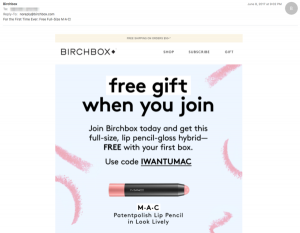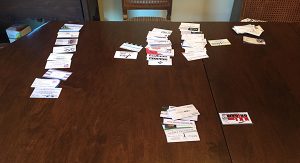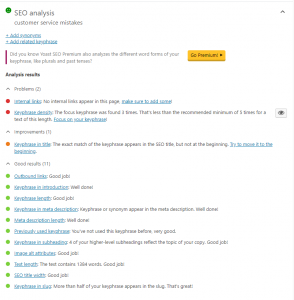Do you want to improve the effectiveness of your email marketing campaign? If you’re having trouble generating conversions and sales through email, despite your growing lead list, it’s time to assess your situation and see where you can improve.
The logical starting point is your email subject line. When a customer gets your message, the subject line is the first thing they will see. If you’re sending emails that have confusing, misleading, or vague headlines, you’re missing out on a significant opportunity to grow your business.
Most consumers will look at the headline, and not bother to click-through. Due to inactivity, your future emails could end up in their spam folder.
Ouch.
Luckily, things don’t have to be this way. Today we will look at several things you should keep in mind when creating subject lines for your emails. Topics include understanding your audience’s needs, sending your emails at the right time, and much more.
Let’s get started!
Focus on the Needs of Your Customers
First, you should always focus on the needs of your customers when creating subject lines. How would you feel if you received an email from a business that encouraged you to do something for them, with no real value proposition for you in return? Odds are, you wouldn’t want to engage with that brand for very long.
Alternatively, imagine a scenario where a company not just offers a solution to your problem, but makes you the focus of the entire email. In this instance, you would feel like the company has your interests in mind and wants to create these emails to help you resolve pain points and reach your goals.
The idea here is you want to focus on the struggles and common goals of your customers. When you start with a subject line that focuses solely on the person clicking through, the rest of the email will follow suit.
Spend some time doing extensive audience research. Find out why customers are turning to your brand and offer them solutions and value in all aspects of your email campaign. Focusing first on the headline will ensure that users can see your intent before they open your message.
Pay Attention to the Words You Use
The words you use can have a massive impact on your email subject lines, blog headlines, and everything in between. When you’re specifically trying to get customers to open your emails, there are certain words you should avoid.
Terms like training, newsletter, and journal are actually more likely to turn subscribers away instead of getting them ready to read your next big email.
There are plenty of ways you can work around these terms. For instance, if you operate a SaaS with lessons on using your product, don’t say that your email has training information.
Instead, an email from a social media marketing SaaS might say, “Ready to skyrocket your social media followers?” Instead of “Your training materials are enclosed!” The exact reason for this type of consumer behavior can vary depending on your industry and reason for sending the email. In most cases, it boils down to subject lines sounding boring or like they are going to require extra effort on behalf of the subscriber.
Your verbiage when writing email subject lines is essential, don’t neglect this factor when you’re working on your marketing campaign.
Add a Splash of Personalization
Personalization is an essential marketing aspect all business owners need to consider. When you create personalized subject lines, users are more likely to open your email.
If you want to start personalizing your subject lines, you could start by creating special promotions for subscribers on their birthday. You can choose to offer the promotion to users on a daily, weekly, or monthly basis.
Some businesses send out emails to customers that they can use at any time during the month of their birthday. This is an excellent tactic for personalizing your emails without spending too much time creating separate campaigns for each individual based on the day they were born.
You can also examine customer behavior on-site and use that data to create personalized campaigns for your user segments. The result of this change is users are more likely to see content and promotions that they will find relevant. Research shows that personalization can lead to 6x more conversions, so don’t neglect this essential marketing strategy.
Send Your Email at the Right Time
The final tip we have for you today deals with sending your emails out at the right time. You could have the best headline in the world, but if you want it to be truly irresistible, you have to make sure your audience sees what you wrote.
There has been plenty of research on the best time to send out emails with pretty consistent results. Most studies have found that the best days to send an email are on Tuesday, Wednesday, and Thursday. Also, late morning and evening emails seemed to perform the best.
Overall, the absolute best time to send an email is on Tuesday at 10am. Obviously, this could vary depending on your industry and audience, but this goes to show the importance of sending out your message at the right time. If this timeline doesn’t match your target audience, know that this timeline reflects a “down” period for most people.
It’s your job to find out when your subscribers are most likely to have a couple spare minutes to read your email and ensure that the message goes out on time.
Back to You
It doesn’t matter if you’re growing your email list from scratch, or already have a long list of subscribers, creating high-quality subject lines can have a massive impact on your brand. Use the tips we’ve provided today to start crafting new headlines for your audience.
You can get more engagement, sales, and conversions by creating compelling, valuable subject lines. As your business grows, you may find yourself making adjustments to your strategy as you introduce more products and customer personas into your lead list.
Digital & Social Articles on Business 2 Community
(18)




